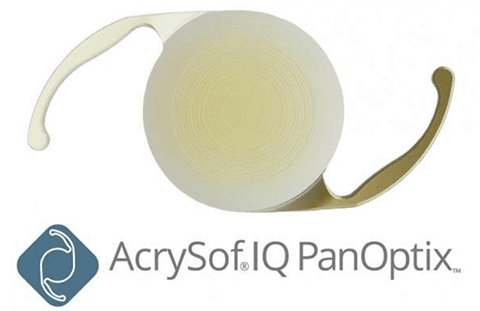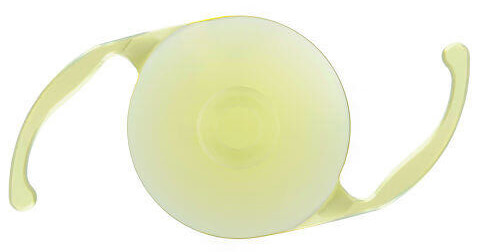
Do you have cataracts and need cataract surgery? Luckily, we provide a variety of advanced lens implants! Dr. Cheema is proud to offer a wide range of advanced IOLs to fit the needs and lifestyle of every patient.
Why do I need an IOL?
After your cataract is removed, your eye will no longer have its natural lens. We need this lens to focus light onto the retina, and without it, our vision would be extremely blurry. So, to improve the patient’s vision after cataract surgery, an artificial lens will be inserted. All cataract surgery includes a basic IOL, called a monofocal lens. This lens will restore vision, but only allows patients to see clearly at one distance. With advanced IOLs, not only will your vision be restored, it may be even better than before you had cataracts!
Types of IOLs
There are many different types of IOLs available on the market. Dr. Cheema offers only the best and is committed to matching patients with the perfect IOL to suit their needs. Advanced lens implants will not only improve your vision after cataract surgery but can correct presbyopia. Presbyopia is a condition where your eye is unable to focus clearly on objects that are up close. Correcting presbyopia can free your need for reading glasses or bifocals. There are many types of advanced lens implants including multifocal, accommodating, and toric IOL.
Three major brands that make multifocal lenses are Acrysof IQ PanOptix Trifocal IOL, ACRYSOF IQ ReSTOR IOL, and Tecnis IOL. These lenses are FDA approved and can give a patient a range of clear vision at all distances after cataract surgery. Crystalens is an accommodating lens that corrects vision using a hinged monofocal lens that moves within the eye just like a natural eye lens would. This brand can help correct presbyopia and helps people who struggle with intermediate or distant vision. A toric IOL lens is used when a patient has cataract surgery but also needs to correct astigmatism. This brand can reduce astigmatism after surgery and will contribute to better vision.
For extended depth of focus lenses, the Tecnis Symfony lens is a multitasking option. With the Symfony lens, your cataract is removed, without the issues that can come along with other multifocal lenses like halos, glare, and diminished vision. The Symfony lens is placed into the eye after the cataract is removed, leaving only the quality vision that holds up under different kinds of vision conditions.
Synergy IOL
Do you have presbyopia and cataracts? The new TECNIS Synergy intraocular lens is now available at Cheema MD Eye Care.
Recently FDA-approved, this premium lens treats both presbyopia and cataracts and provides patients with the widest range of continuous vision available.
What is Presbyopia?
Presbyopia occurs when the natural lens in your eye loses flexibility. When the lens can’t move in the same way it once did, it is more challenging to see things right in front of you.
People with presbyopia struggle reading the newspaper, looking at a menu while ordering, or trying to shave their faces. A classic sign of having presbyopia is you’ll have to hold things you’re trying to see further away from you to try and see them better.
Understanding Cataract Surgery and IOLs
Cataracts develop when the natural lens becomes cloudy and is often common in people in their fifties or sixties. During cataract surgery, you’ll have the clouded natural lens of your eye removed.
After removing the natural lens, it is replaced with an intraocular lens or IOL. The IOL takes over the job of the natural lens, allowing you to see clearly once more. There are many kinds of IOLs available, and now, with the new Synergy lens, you’ll be able to see like never before.
Why the Synergy IOL is Worth Considering
The Synergy IOL is a premium multifocal lens. That means it allows your eye to focus and see at several distances.
You’ll enjoy improved long-distance vision, intermediate vision, and near vision without any frustrating gaps in your ability to see that other IOLs may cause. You’ll be able to:
- See far away for sporting events and going to the movies
- See at arm’s length for daily tasks like shaving, applying makeup, or computer work
- See up close for reading, writing, and sewing
This multifocal lens means you may be able to reduce your dependence on glasses when you need to see at various distances. The Synergy IOL provides the best low-light reading vision available.
For nighttime vision, the premium IOL reduces the appearance of halos and starbursts around lights. Night driving feels much easier and safer with the Synergy IOL.
You’ll also have the most comprehensive range of continuous vision, even compared to the trifocal IOL with the Synergy lens. Wearers also look forward to the best near vision an IOL can provide, along with superior image contrast both day and night.
Be More Independent with the Synergy IOL
If you have a more active lifestyle and love playing golf, tennis, or going sailing, you may benefit from choosing his premium lens. With the Synergy IOL, you can imagine a life that relies less on glasses.
Thanks to the Synergy IOL, many patients find they can live the life they want and be more independent. The Synergy IOL also comes in a toric model if you have astigmatism. You can correct astigmatism while finally enjoying the vision you’ve always wanted.
How the Synergy IOL Compares
The Synergy IOL has been studied in a controlled clinical trial. One hundred and thirty-five patients received Synergy IOLs, while 137 patients received a monofocal IOL. Both groups had their vision tested before and after cataract surgery.
Six months later, the differences between the Synergy IOL and monofocal patients were apparent. Synergy patients had sharper near and intermediate vision. They also reported less need for eyeglasses.
The Synergy IOL offers superior performance and a wide range of continuous vision. Cheema MD Eye Care is proud to provide this intraocular lens to our patients.
Are you ready to learn more about the Synergy IOL? Find out if it may be the right IOL for you by scheduling a cataract screening at Cheema MD Eye Care in Kingston, NY, now!
PanOptix Trifocal IOL
When it comes to cataract surgery, it’s important to have options. At Cheema Eye, we’re excited to now offer cataract patients the PanOptix trifocal IOL! The PanOptix trifocal IOL is the first of its kind, allowing for vision at all distances: near, intermediate, and distance.
What is the PanOptix trifocal IOL?

The PanOptix trifocal IOL is an advanced lens option. Like a multifocal lens, the trifocal IOL has alternating rings for clear vision. Unlike other advanced IOLs, the PanOptix trifocal IOL delivers clear vision at any distance. This includes up close, far away, and intermediate vision.
With most advanced lens options, only up close and far away vision is addressed. Intermediate vision means you can do things like work on the computer, see clearly in all lighting conditions, or run errands. It’s especially useful for any tasks that you need to be able to complete at an arm’s distance away. Until the PanOptix trifocal IOL, this wasn’t something that advanced IOLs could provide.
Why Choose The PanOptix Trifocal IOL?
There are many advanced IOL options, so why should you choose the PanOptix trifocal IOL? The biggest reason is it’s the only IOL that provides distance, intermediate and near.
If you perform a lot of tasks at arm’s length, this is incredibly helpful. This can include tasks like:
- Reading a restaurant menu
- Looking at text messages on your smartphone
- Completing work on your computer
- Arranging the perfect flower bouquet
- Knitting a blanket
- Cooking your favorite meal
- Reading a book or newspaper
- Playing an instrument
Besides providing crystal clear intermediate vision, you can live life without wearing glasses. In a clinical study, 80.5% of people with the PanOptix trifocal IOL reported that within the past week, they never had to wear glasses to see. The PanOptix trifocal IOL means you can see the world without restrictions! This is true even for patients with astigmatism.
With cataracts, you may have worried about not having enough light and being unable to see. But with the PanOptix trifocal IOL, you’ll experience excellent vision in all lighting, including:
- Low light
- Dim light
- Bright light
- Daylight
No matter what kind of lighting you’re in, you’ll be able to see clearly.
The PanOptix trifocal IOL also comes with health benefits. The material that the lens is made from filters out both blue light and ultraviolet light. This protects the eye from sun damage and any damage due to prolonged screen time.
Who is a good candidate for the PanOptix Trifocal IOL?
The only way to know for sure if you’re a good candidate for cataract surgery and the PanOptix trifocal IOL is to have a cataract consultation. In most cases, the PanOptix trifocal IOL is best for patients who are looking to perform up-close work on a computer. It’s also a good choice for patients that want to avoid wearing glasses after cataract surgery and want visual freedom.
Choosing the right IOL for you can be difficult with all of the options out there. Dr. Cheema is here to help. Contact our office today to schedule your cataract surgery consultation. Be sure to ask questions about which IOL would best suit your needs.
Vivity Advanced Lens

The AcrySof® IQ Vivity™ IOL is a non-diffractive extended depth of focus (EDOF) IOL. This new advanced lens allows you to experience excellent distance vision (driving), enhanced intermediate vision (computer screen), and functional near vision (reading). Vivity is also available as a toric lens for patients with astigmatism.



